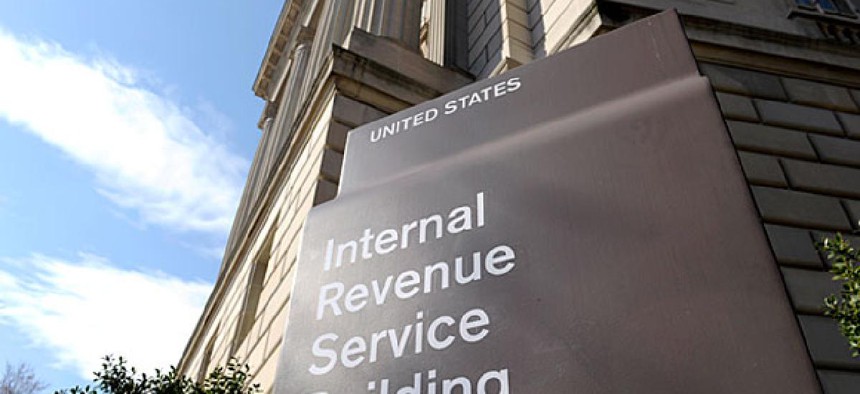
Susan Walsh/AP
IRS Saves $1 Billion by Cutting Staff, Travel, Office Space and Contracts
Agency touts strategic priorities amid budget uncertainty.
This story has been updated with results of a union suvey finding that reduced staffing may delay IRS services.
The Internal Revenue Service posted a summary of recent achievements, outlining $1 billion in savings since fiscal 2010, primarily through cuts in personnel, training, office space and contracting.
“The IRS continues to invest in strategic priorities that allow it to fulfill its dual mission of tax law enforcement and taxpayer service,” a statement said. “As the budget environment has become more difficult and the IRS has stepped up its cost-saving activities, it has also maintained strong taxpayer service performance results and continued a balanced and effective enforcement program.”
While intensifying its campaign against tax fraud, particularly identity theft, the agency noted that it has been handed new responsibilities by Congress, such as merchant card reporting, the Foreign Account Tax Compliance Act and tax-related parts of the Affordable Care Act. “However,” the statement read, “the continued reductions in the IRS budget will begin to have an adverse impact on service and enforcement efforts in the near future. This will affect the service we provide to taxpayers and the amount of money we collect through enforcement activities.”
The IRS budget for fiscal 2012 was cut by $305 million. As a result, full-time staffing at the IRS has declined by 8,000 positions, or about 8 percent. Staffing for key enforcement occupations fell by 5,000 during the last two years.
The $1 billion in savings was achieved through $600 million in sequestration cuts, and net savings of $350 million over two years was used shield employees from “adverse actions,” the summary said.
Policy changes included confining hiring authority to deputy commissioners and offering buyouts to 7,000 employees (of which 1,244 accepted). By limiting travel and training to mission-critical projects, the agency saved $83 million through such alternatives as videoconferencing, the statement said.
In recasting office space, the agency closed 43 smaller offices, encouraged telework and reconfigured layouts to reduce the footprint by more than 1 million square feet. It saved on printing and postage by abandoning past practice of mailing tax forms to taxpayers every tax season, and it converted to paperless earnings and leave statements.
Despite the stretched workforce, the IRS said, its performance accomplishments included increasing the percentage of taxpayers who file electronically from 69.3 percent in 2010 to 80.5 percent in 2012. It collected more than $50 billion in enforcement revenue for the third year running, and it halted five million suspicious returns in fiscal 2012, up from three million the year before.
Separately on Monday, the National Treasury Employees Union released results of a new membership survey showing IRS staff shortages may delay refunds for taxpayer identity theft victims by six months to a year. Taxpayer assistance centers, NTEU said, are now staffed at half the level of eight years ago, with nearly a fourth of the 389 centers staffed by only one or two employees. “This filing season, long lines beginning in the pre-dawn hours well before the offices open and lengthy waits for help are common at TACs everywhere,” NTEU said.
Shortages are also affecting taxpayer education for small businesses, foreign-language help and aid to hardship cases. “Taxpayers who owe money after audits are seeing higher penalty and interest charges than if their cases were able to be handled on a more timely basis,” NTEU said, “ and “those filing an amended return and seeking a refund are finding the processing time extended by a month, from 12 weeks to 16.”







